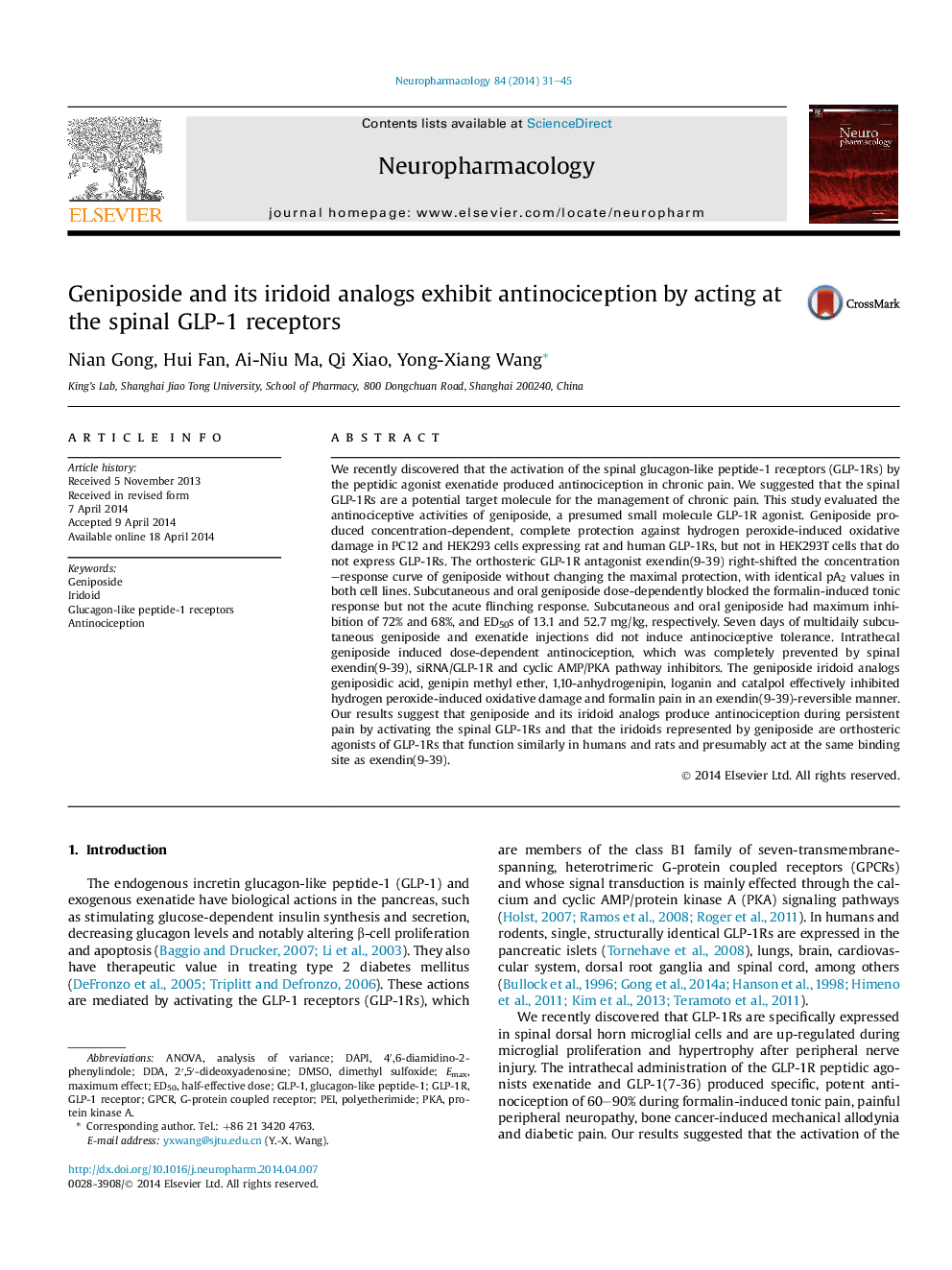| Article ID | Journal | Published Year | Pages | File Type |
|---|---|---|---|---|
| 5814508 | Neuropharmacology | 2014 | 15 Pages |
â¢Geniposide blocked H2O2-induced oxidative damage in an exendin(9-39)-reversible manner.â¢Subcutaneous and oral geniposide blocked formalin-induced tonic flinching response.â¢A 7-day subcutaneous geniposide did not induce antinociceptive tolerance.â¢Geniposide antinociception was prevented by intrathecal exendin(9-39) and siRNA/GLP-1R.â¢Geniposide iridoid analogs inhibited H2O2-induced oxidative damage and formalin pain.
We recently discovered that the activation of the spinal glucagon-like peptide-1 receptors (GLP-1Rs) by the peptidic agonist exenatide produced antinociception in chronic pain. We suggested that the spinal GLP-1Rs are a potential target molecule for the management of chronic pain. This study evaluated the antinociceptive activities of geniposide, a presumed small molecule GLP-1R agonist. Geniposide produced concentration-dependent, complete protection against hydrogen peroxide-induced oxidative damage in PC12 and HEK293 cells expressing rat and human GLP-1Rs, but not in HEK293T cells that do not express GLP-1Rs. The orthosteric GLP-1R antagonist exendin(9-39) right-shifted the concentration-response curve of geniposide without changing the maximal protection, with identical pA2 values in both cell lines. Subcutaneous and oral geniposide dose-dependently blocked the formalin-induced tonic response but not the acute flinching response. Subcutaneous and oral geniposide had maximum inhibition of 72% and 68%, and ED50s of 13.1 and 52.7Â mg/kg, respectively. Seven days of multidaily subcutaneous geniposide and exenatide injections did not induce antinociceptive tolerance. Intrathecal geniposide induced dose-dependent antinociception, which was completely prevented by spinal exendin(9-39), siRNA/GLP-1R and cyclic AMP/PKA pathway inhibitors. The geniposide iridoid analogs geniposidic acid, genipin methyl ether, 1,10-anhydrogenipin, loganin and catalpol effectively inhibited hydrogen peroxide-induced oxidative damage and formalin pain in an exendin(9-39)-reversible manner. Our results suggest that geniposide and its iridoid analogs produce antinociception during persistent pain by activating the spinal GLP-1Rs and that the iridoids represented by geniposide are orthosteric agonists of GLP-1Rs that function similarly in humans and rats and presumably act at the same binding site as exendin(9-39).
